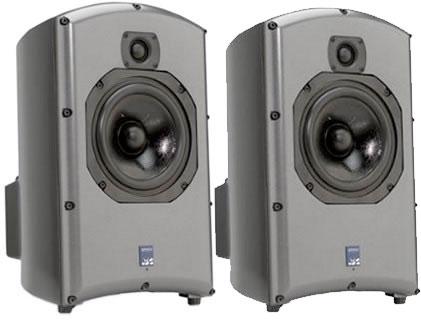The ATC Loudspeakers SCM16A is an active, robust monitor designed for the accurate reproduction of stereo and multi-channel audio in small to medium sized studios or in remote locations.
ATC engineer Ben Lilly has advanced the art and science of loudspeaker design by defeating a design trade-off that has heretofore been considered inescapable, allowing the high-end manufacturer to reduce the price point on its next generation of loudspeakers, which will take advantage of Lilly's innovation.
Conventional loudspeaker design recognizes that stiff driver cones generate a desirable extended on-axis frequency response. However, it comes at a price: a poor off-axis frequency response and multiple resonances that color the sound. The conventional "fix" is to damp the motion of the driver cone, but this makes the loudspeaker dramatically less efficient. Thus, with the exception of the ATC SCM16A, every loudspeaker that has ever been designed in the genre in the history of amplified sound was virtually either acoustically compromised or inefficient.
Lilly's innovation is called Constrained Layer Damping (CLD): two lightweight driver cones sandwich a constrained damping layer. CLD is dramatically more efficient than conventional damping because of the way it shears when the cone flexes. The shearing causes unwanted vibration energy to dissipate as frictional heat, instead of as acoustic distortion. Thus, Lilly's CLD design reduces harmonic distortion between 300Hz - 3kHz, creates an extended resonance-free axial frequency response, improves the off-axis frequency response, and, if all that weren't enough, causes a huge increase in loudspeaker power response. As a consequence, the ATC SCM16A is a better sounding loudspeaker that requires much less power to generate a given SPL.
In addition to the CLD-designed 150mm mid/bass driver, the SCM16A features a neodymium 25mm soft dome tweeter. The SCM16A's upgraded on-board amplifier pack provides 200watts to the mid/bass driver and 50watts to HF driver. Operating in Class A up to 2/3rds of output, this ultra-low distortion design is capable of continuous sound pressure levels greater than 108db. The electronic crossover offers an exceptionally smooth and even frequency response. Controls include bass level EQ and high frequency attenuation.
